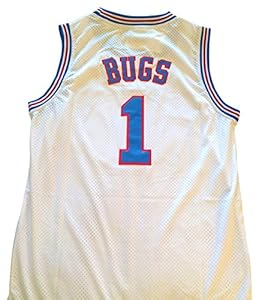Collecting vintage football cards is not just a hobby; it’s a passion that intertwines nostalgia with investment potential. Whether you have a few treasured cards or an extensive collection, proper restoration and preservation are crucial to maintaining the value and integrity of your cards. This article will guide you through best practices, common pitfalls, and some fascinating case studies in the realm of vintage football card care.
The Importance of Preservation
Preserving your vintage football cards goes beyond keeping them in a box. It’s about protecting your investment and ensuring that future generations can appreciate these pieces of sports history. Here are some reasons why preservation is essential:
- Value Maintenance: The condition of a card significantly impacts its market value. Cards that are well-preserved can fetch thousands of dollars at auctions.
- Nostalgia and Sentiment: For many collectors, these cards represent cherished memories of sports history and personal experiences.
- Historical Significance: Vintage cards often serve as artifacts that reflect the culture and sports history of their time.
Understanding Card Grading

Before diving into preservation techniques, it’s important to understand card grading. Professional grading services like PSA (Professional Sports Authenticator) and BGS (Beckett Grading Services) provide a numerical score that reflects the condition of your cards. Cards are graded based on factors such as:
- Centering: How well the image is centered on the card.
- Edges: The quality and uniformity of the card’s edges.
- Surface: The overall condition of the card’s face, including any scratches or blemishes.
- Corners: The sharpness and condition of the card’s corners.
Understanding grading helps collectors know what to look for in their preservation efforts and how to enhance their cards’ market value.
Best Practices for Preserving Vintage Football Cards
Preserving your vintage football cards requires a combination of proper storage, handling, and cleaning. Below are some best practices to follow:
1. Proper Storage Solutions
How you store your cards can make a significant difference in their longevity. Here are some recommended storage solutions:
- Card Sleeves: Use acid-free, archival-grade sleeves to protect each card from dust and physical damage.
- Toploaders: These rigid plastic holders provide extra protection against bending and creasing.
- Binders: Use binders with acid-free pages for organized storage, but avoid overloading them as this can create pressure on the cards.
- Climate Control: Store cards in a cool, dry place away from direct sunlight to prevent fading and warping.
2. Handling with Care

When it comes to handling your cards, take the following precautions:
- Clean Hands: Always handle cards with clean, dry hands to avoid transferring oils and dirt.
- Use Gloves: Consider wearing cotton gloves while handling particularly valuable cards.
- Avoid Excessive Manipulation: Minimize the number of times you take cards out of their protective sleeves.
3. Avoiding Common Pitfalls

Many collectors unknowingly damage their cards through common mistakes. Be aware of the following pitfalls:
- Using Tape: Never use tape to fix torn cards, as this can cause irreversible damage.
- Excessive Cleaning: Avoid using harsh chemicals or abrasive materials to clean cards, as they can scratch the surface.
- Ignoring Humidity: High humidity can lead to mold growth, while low humidity can cause cards to become brittle.
Restoration Techniques: When and How to Restore Your Cards
In some cases, restoration may be necessary to improve the appearance of a card. However, restoration must be approached with caution, as improper techniques can decrease a card’s value.
1. Assess the Damage
Before attempting any restoration, assess the extent of the damage. Minor creases or stains might be addressable, but significant tears or missing pieces may require professional help.
2. Professional Restoration vs. DIY
When considering restoration, you have two options: professional services or do-it-yourself techniques. Here’s a breakdown:
- Professional Services: Companies specializing in card restoration can clean, repair, and even regrade cards. However, this can be costly.
- DIY Techniques: For minor cleaning, using a soft, lint-free cloth can remove surface dirt. For creases, some collectors lightly press cards under a stack of books for a short period.
3. The Ethics of Restoration
Be aware that restoration can affect a card’s value. Cards that have been restored are often graded lower than their non-restored counterparts. Always disclose any restoration work if you plan to sell or trade your cards.
Case Studies: Success Stories in Card Preservation

To illustrate the importance of proper preservation, let’s look at some notable case studies:
Case Study 1: The Honus Wagner T206
![]()
The Honus Wagner T206 card is one of the most famous and valuable baseball cards in history. A well-preserved card sold for nearly $6.6 million in a private sale in 2021. Its value is attributed to its rarity and impeccable condition, underscoring the significance of preservation in maximizing value.
Case Study 2: The 1986 Fleer Michael Jordan Rookie Card

A pristine Michael Jordan rookie card graded PSA 10 sold for over $738,000 in early 2021. The card’s value has skyrocketed due to its cultural significance and the effective preservation strategies employed by collectors, highlighting how proper care can yield impressive returns.
Conclusion: Investing in Care for Your Collection
Caring for your vintage football card collection is an investment in both nostalgia and monetary value. By understanding the importance of preservation, following best practices for storage and handling, and knowing when to restore, you can protect your collection for years to come. Remember that the value of your cards is not only monetary but also sentimental; they represent a piece of sports history that deserves to be cherished and preserved.
In summary, take the time to educate yourself on the nuances of card grading, invest in proper storage solutions, handle your cards with care, and be cautious with restoration. The effort you put into preserving your collection will pay dividends, both in terms of value and enjoyment.




